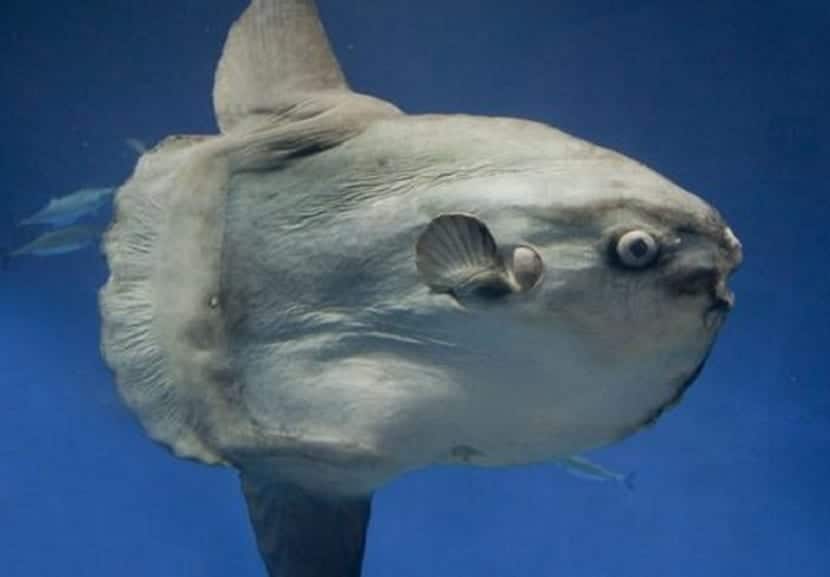
In the oceans we find millions of species. Some are more beautiful, others are better known and others are rarer. The human being considers the fish that we are going to talk about today to be a very rare species. It's about the sunfish.
It is the heaviest fish in the world and has a rather curious physique. Do you want to know more about the sunfish?
Features and Description
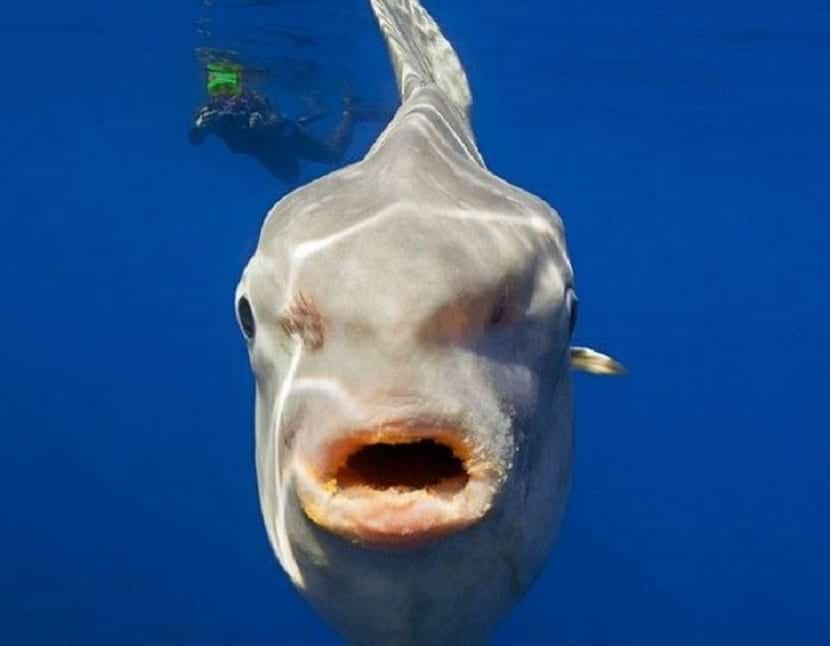
The sunfish is also known as mola mola fish. It belongs to the order of Tetraodontiforms and family Molidae.
This species originates from the tropical sea near the equator but appears to be becoming more common in southern England during the summer months, something many people attribute to global warming and climate change.
In short, the body of the sunfish is a large head with fins. Can measure up to 3,3 meters in length and with a maximum weight of 2300 kilograms, although it usually ranges between 247 and 2000 kg.
Their skin is covered in a layer of mucus whose texture resembles sandpaper. It is quite thick and has no scales. Its color can vary in different shades of gray, brown and silver gray. They usually have a white belly and some of them may have white spots, both on the lateral and dorsal fins.
If we compare it with other species de peces, sunfish do not have as many vertebrae and lack nerves, pelvic fins, and a swim bladder. Hence, this fish is a very rare species, whose morphology differs from the common. The dorsal and anal fins are long and the pectoral one is next to the dorsal one.
Another curious part that this fish has is that instead of a tail fin it has a tail that it uses as a rudder and that extends from the rear edge of the dorsal fin to the rear edge of the anal fin. Its mouth is full of small teeth fused in the shape of a beak.
It is not known how long the sunfish live. What is known is that in captivity they can last up to 10 years. This indicates that their life expectancy in the wild is probably shorter, given the threats and the need to search for food. In captivity they have the advantage that they lack predators and have a correct and fair diet, as well as veterinary care if necessary.
Habitat and distribution
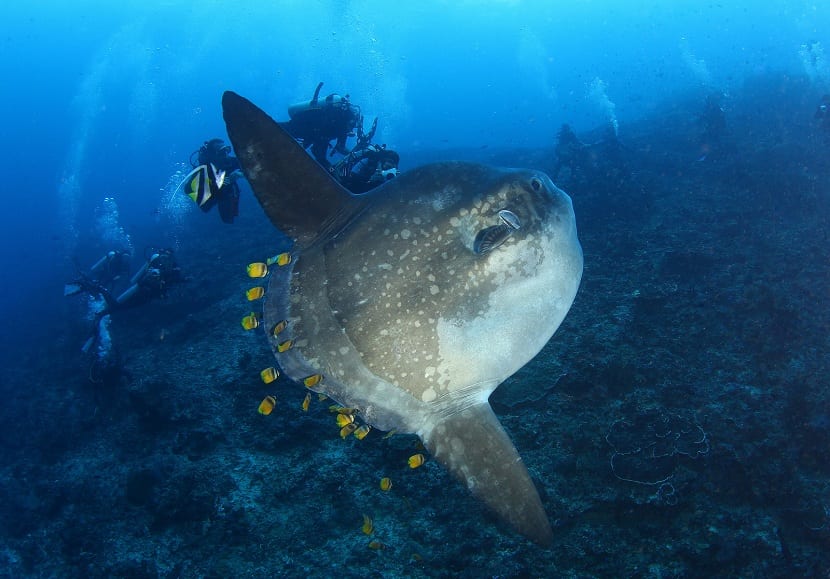
The sunfish it is found all over the world. However, the areas where their populations are greatest is in the temperate and tropical areas of the Atlantic Ocean, Pacific Ocean, Indian Ocean and Mediterranean Sea.
In these places, their habitat corresponds to deep coral reefs and beds of algae in the open sea.
Behavior and feeding
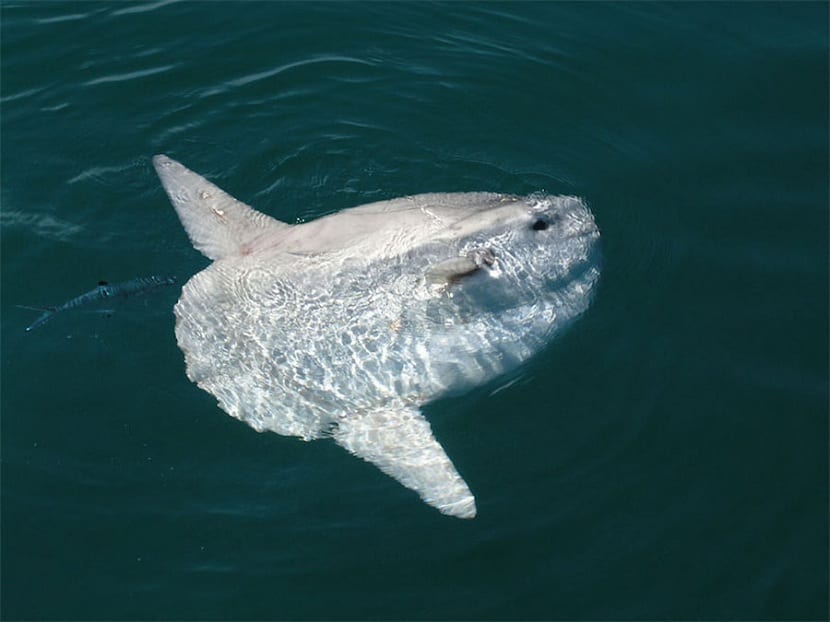
The sunfish is solitary and has a rather curious behavior; and it is that he likes to sunbathe. To do this, it rises to the surface and, in this way, manages to regulate its temperature after swimming in colder waters. It leaves its fins exposed to free itself from parasites and sometimes even jumps on the surface for the same purpose. They are also able to rid themselves of parasites with the help of other sunfish.
Since such a big fish it does not have many predators, You can swim freely and carefree in the sea without thinking that you may have enemies nearby. When divers come across a sunfish, it is neither aggressive nor skittish. Moreover, sometimes these fish, invaded by curiosity, follow the divers. So it can be considered as a docile and friendly fish.
In summer and spring, these fish migrate to higher latitudes to search for food. It feeds mainly on jellyfish and zooplankton, although it also eats crustaceans, salpa, algae and larvae. de peces. Since this diet does not have many nutrients, sunfish have to consume large amounts of food to be able to maintain that body size and weight.
Reproduction
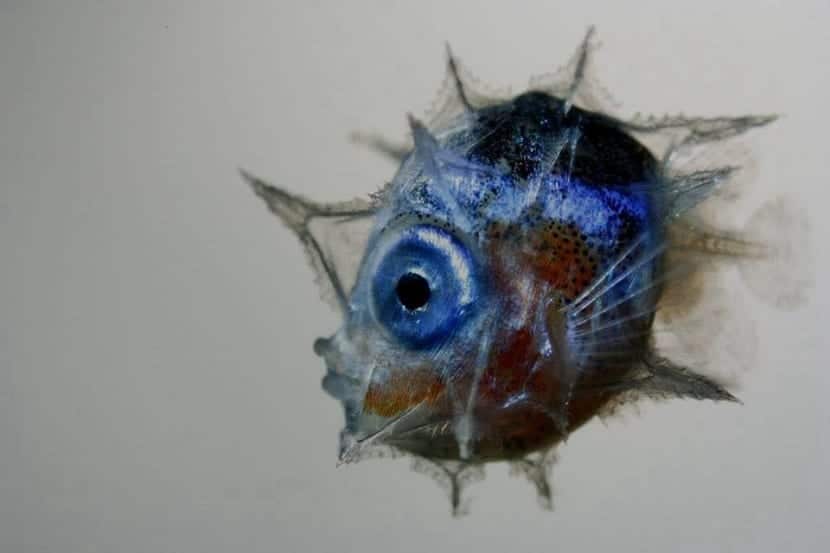
Sunfish fry
Although there is not much information about sunfish reproduction, females are believed to spawn in the Sargasso Sea during the months of August and October. When they spawn, they are able to deposit 300 million 13-millimeter eggs. These eggs are fertilized once they are in the water.
What is known is that it is the most fertile species of vertebrate. When the eggs hatch, the fry appear ninja stars, since its spines are more pronounced with respect to the rest of the body.
Threats

Sunfish do not have too many natural predators, thanks to their thick skin being able to deter marine species from attacking them. However, they are often attacked by sharks, killer whales, and sea lions. Younger fish tend to be attacked more often by bluefin tuna. As they do not have any morphology to help them defend themselves, or any type of poison, the sunfish will swim at the deepest area where the rest de peces They don't dare go to escape.
The threat that is real is capture by humans, both accidentally during fishing, and in their intentional hunting to trade their skin.
Can you eat the sunfish?

Sunfish cannot be traded in the European Union, since it is a crime to both capture and buy it. It is a protected species. However, in Asian countries like Japan, China and Taiwan are considered a delicacy. This consumption has led to the populations of these fish being drastically reduced throughout the area of Japan and China, because, apart from its intentional capture, it is also accidentally caught with trawling.
The IUCN (International Union for Conservation of Nature) affirms that the fishing vessels that are going to catch allowed species, such as swordfish, end up having in their nets more sunfish than target species.
This is a fish full of curiosities that is worth seeing.
How disturbing. Fuck weird fish.